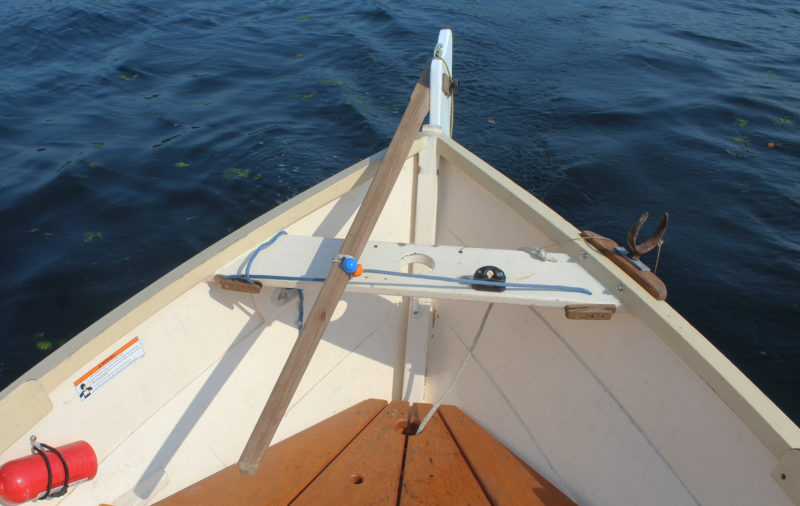 SBM photographs
SBM photographsThe bungee doesn’t need to be removed to use the tiller. Just push or pull the tiller and the bungee will hold it at the new angle.
In my years of solo cruising in small boats I’ve found that there are many times when it’s helpful to have both hands free while sailing. I can free one hand by securing mainsheet with a cam cleat or slippery hitch, and then I just need something to hold the tiller in place so I can grab a bite to eat, take a compass bearing, or pull on a jacket.
There are a number of tiller tenders available commercially, but they tend to be bulky, overly complicated, and come at an added expense; from what I’ve seen, many of them also require you to engage and disengage them or adjust their tension.
On a recent cruise, though, my brother showed me a tiller tender that eliminates all those problems. It’s cheap, simple, and utterly reliable. It doesn’t need adjustment and there’s nothing to engage or disengage; you can steer the boat normally with the system in place, and whenever you need to let go of the tiller, it stays where you positioned it.
To set this system up for a conventional tiller, run a line athwartships under your tiller from rail to rail. If your boat has open gunwales or a pair of cleats well aft on the gunwales, you don’t need to add anything to anchor the ends of the line. This line needs to be just taut enough to minimize play in the tiller when the system is in use.
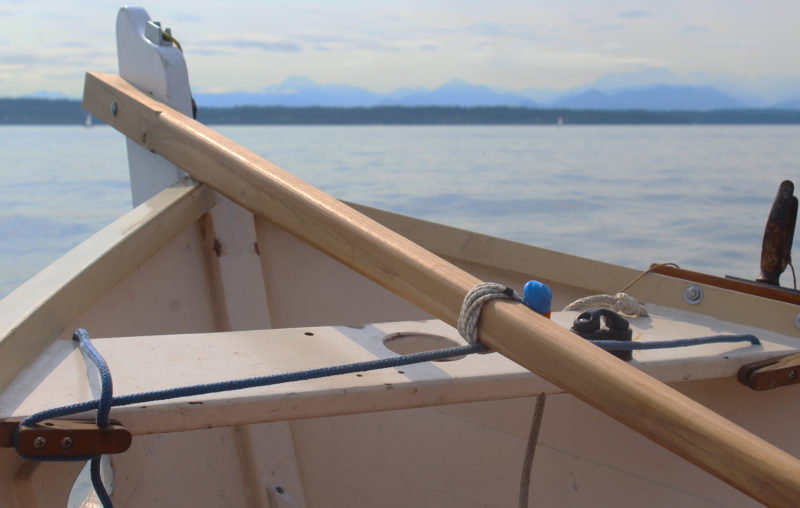
The tiller tender requires only a short line run across the boat under the tiller an toggled bungee loop to squeeze that line to the tiller.
Next, take a short bungee loop with a plastic ball on the end and pass the looped end around both the tiller and the loop you just rigged. Take enough turns with the bungee around both the tiller and the loop of line to pull them tightly together before tucking the plastic ball through the bungee to finish the wrap. You can always adjust the tension if you find the bungee is not tight enough and not providing enough friction to hold the tiller in place, or too tight and making the tiller hard to move.
That’s it. Your tiller tender is ready for action. You will still be able to steer normally, but the friction of the system will hold the tiller in place when you let go. You can set the tiller to hold a steady course or push the tiller hard over to tack or jibe while you tend to the sheets.
After rigging this system on my own boat, I found myself sailing hands-free most of the time, with just a slight nudge of the tiller now and then. I doubt I’ll ever go cruising again, or even daysailing, without having this simple tiller tender in place.
One caveat: as with all tiller tenders, be aware that your boat will keep right on sailing if you fall overboard with this system rigged. Act accordingly.![]()
Tom Pamperin is a freelance writer who lives in northwestern Wisconsin. He spends his summers cruising small boats throughout Wisconsin, the North Channel, and along the Texas coast. He is a frequent contributor to Small Boats Monthly and WoodenBoat.
Editor’s note:
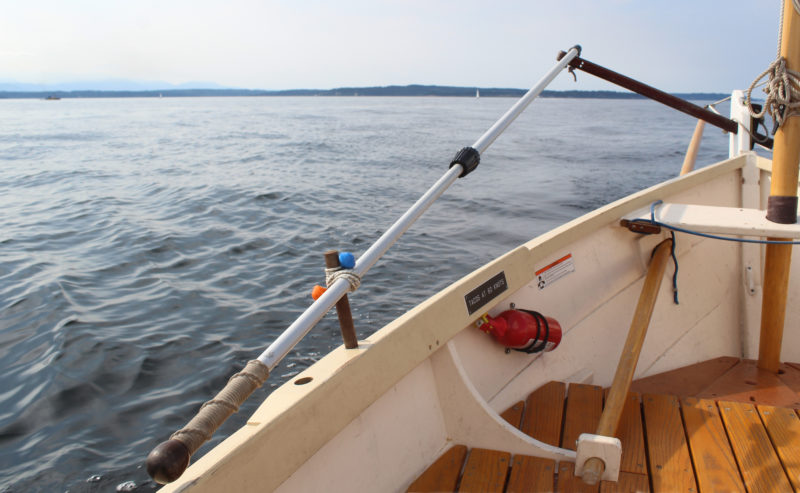
A bungee loop can also be used as a tiller tender on a Norwegian tiller.
To give this system a try, I made a standard tiller that I could attach to the rudder of my Caledonia Yawl (pictured here in the photographs above) and sailed without the mizzen mast in place. I was impressed how well the bungee worked with a standard tiller and wanted to use the same method to create a tiller tender for a Norwegian tiller. I first thought about using the same length of line but set fore and aft instead of athwartships, but a thole pin presented itself as a better place to start. I put the bungee loop over the push-pull tiller and then wrapped it around both tiller and thole.
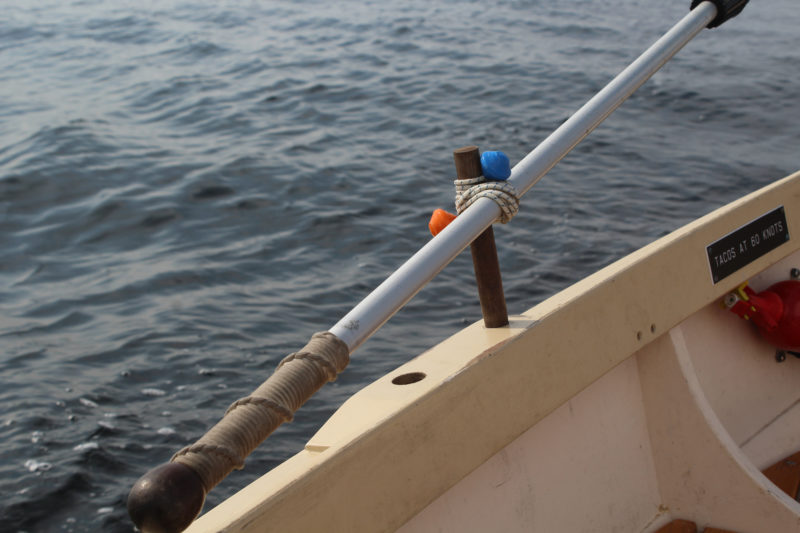
With a Norwegian tiller, the bungee can be looped onto a thole pin or other upright fixture. If the bungee loop has the tiller running through it before it is wrapped, the tiller can be lifted to disengage the tiller tender without loosing the bungee.
That’s all it took, and the bungee worked just as well in this new arrangement. I could change course by pushing or pulling the tiller and leaving it to make the boat come about or hold a straight course. I could also disengage the tiller by lifting it—along with the bungee—from the thole and have complete freedom of motion. The tiller follows me after I tack and gets wrapped with a thole pin on the windward rail.
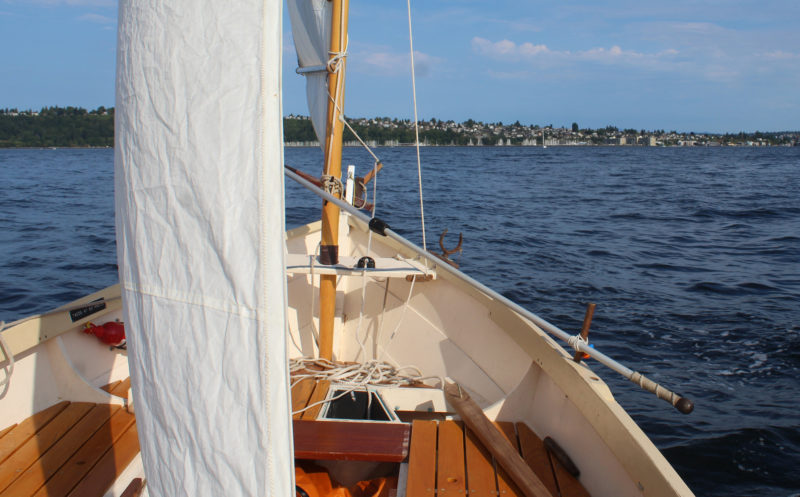
The tiller should be held on the weather rail where it is accessible when the boat heels in a gust.
You can share your tricks of the trade with other Small Boats Monthly readers by sending us an email.

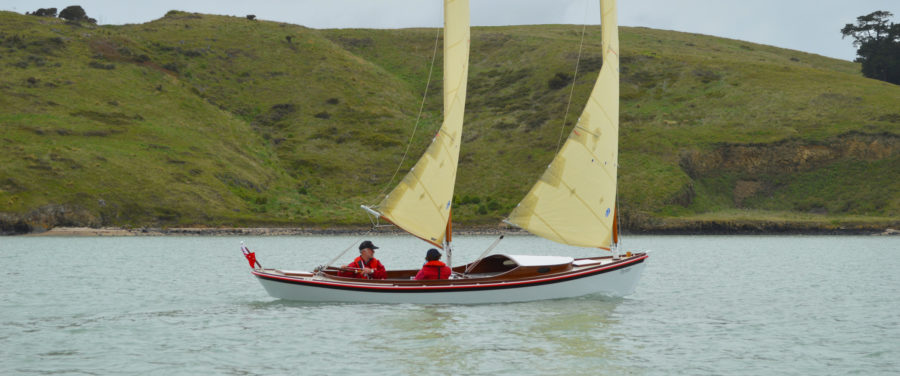
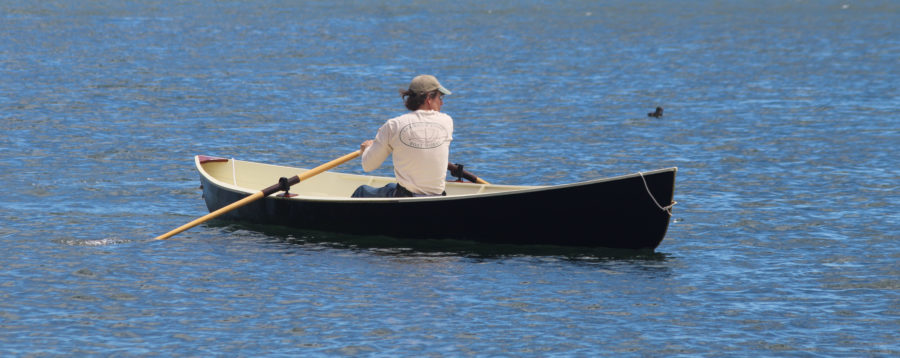

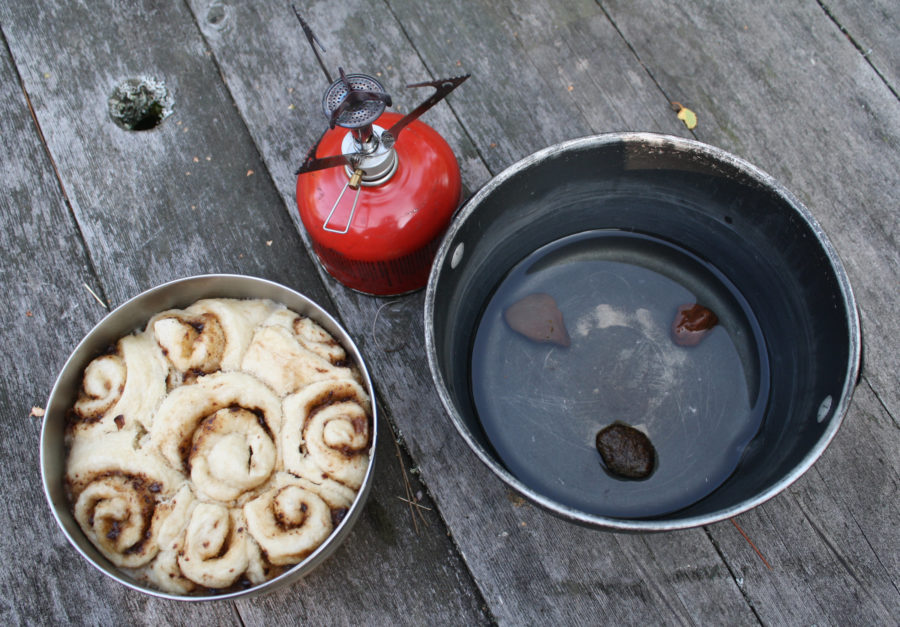
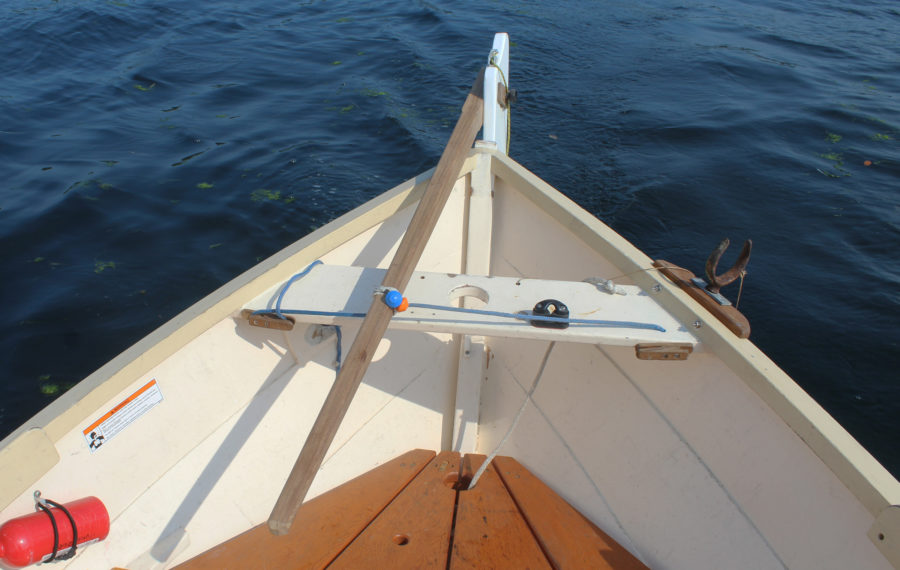
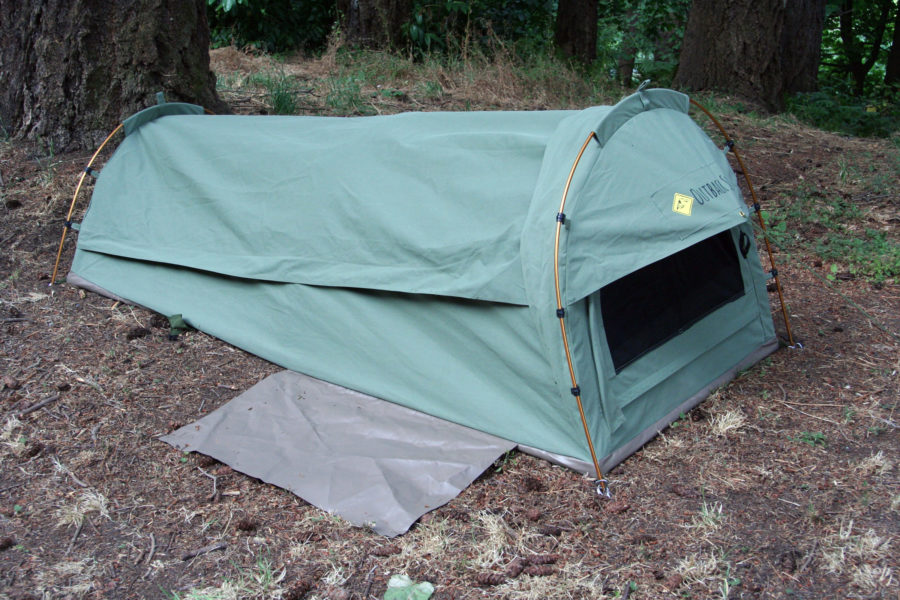
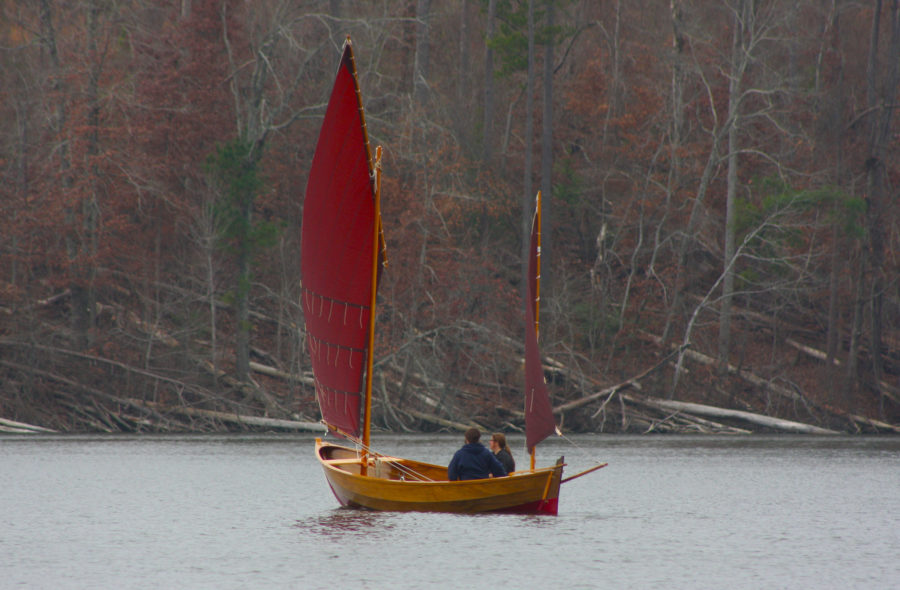
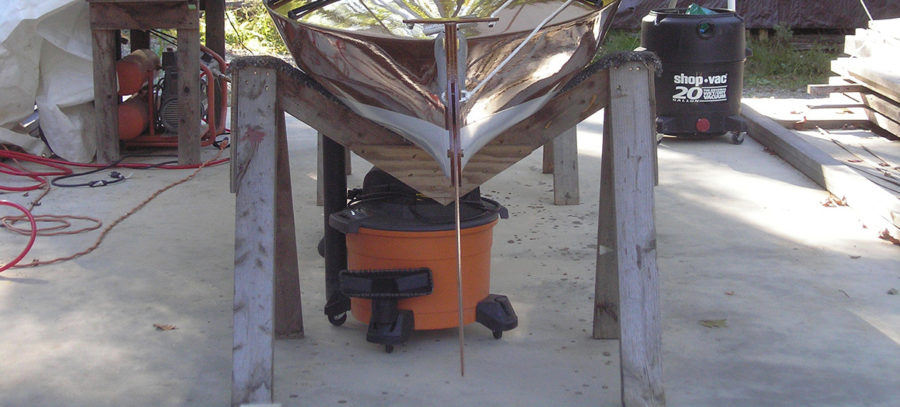
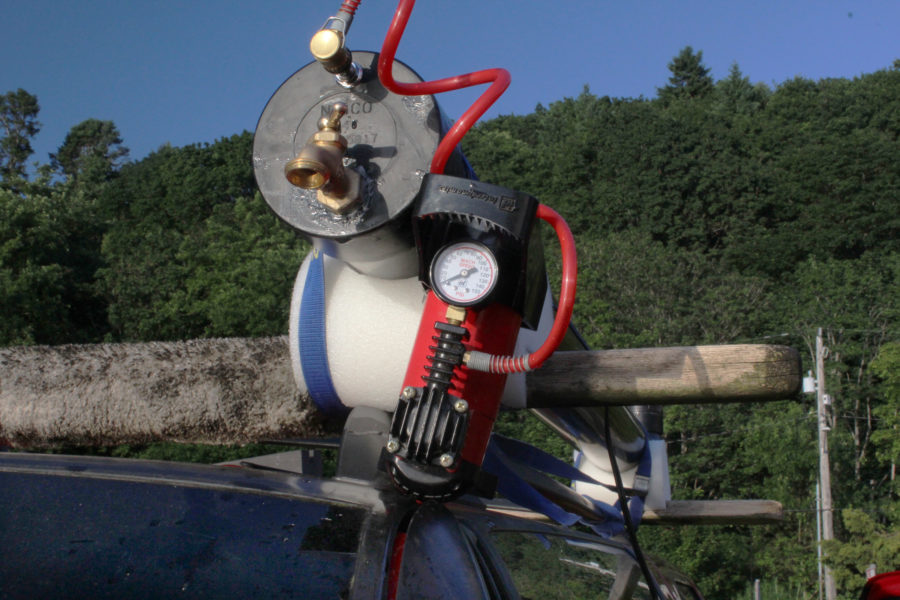
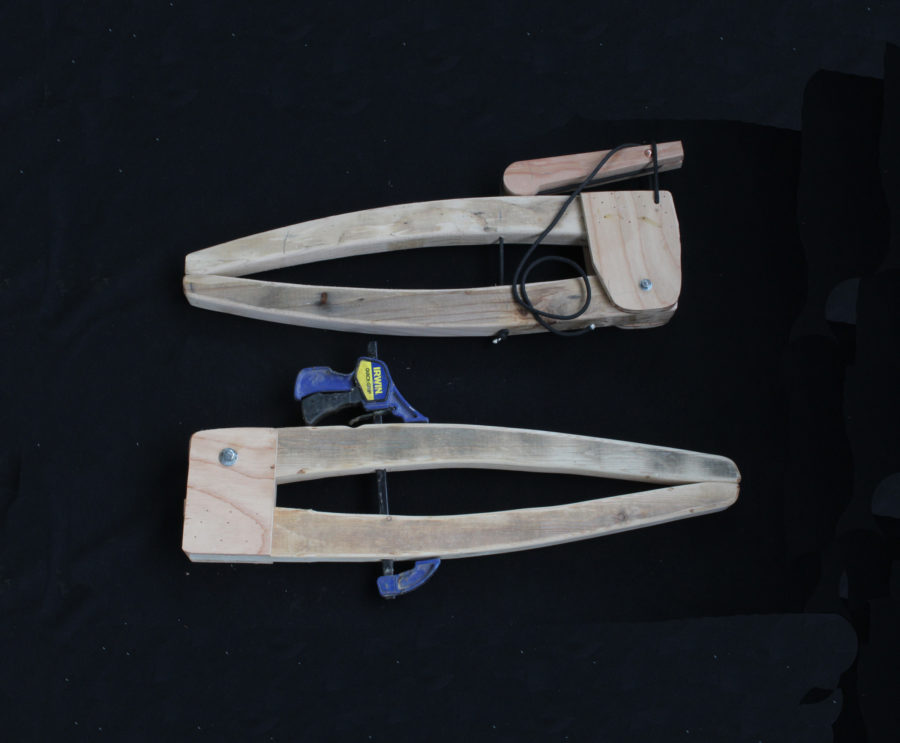
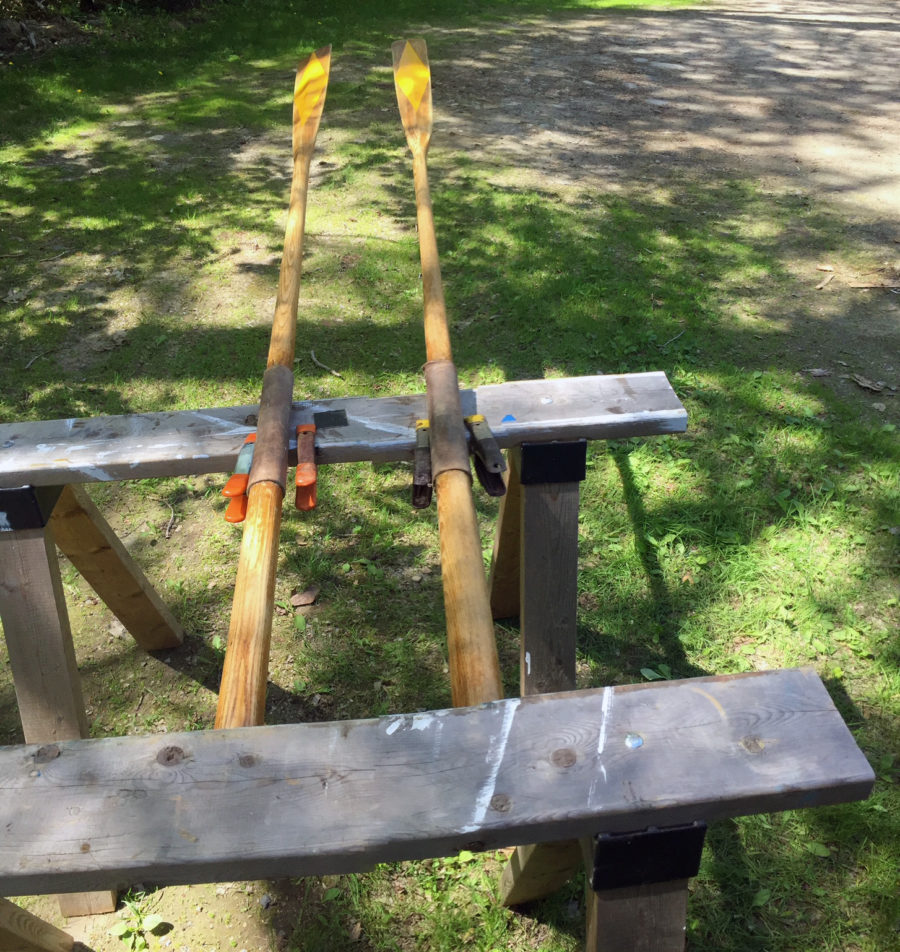
One thing to consider is that the two legs of the line sure look like they are the radii of an ellipse. Accordingly there needs to be some slack in the system to get full range of motion for the rudder, either from the bungees around the tiller, a loose line or by using a bungee-tensioned cross line. The latter is what I have used for a while. The cross line is anchored just ahead of the rudder at small pad eye on the port gunnel, makes a turn through a small shackle attached to the forward part of the rudder, then through a pad eye on the starboard side. A bungee connects the line back to the port pad eye, creating an isosceles triangle when the rudder is centered. It is handy. Having a way to adjust the tension from the bungee is also nice.
Sure glad that wasn’t totally confusing. KISS
Ole thanks for the comment. I’m not sure I follow you about needing a cross line, or about needing adjustments to get full range of motion for the rudder–the system as described is dead simple, and works really well with just an athwartships line and a bungee holding it to the tiller. No need to adjust tension; you can use the tiller normally, but it will stay wherever you leave it when you let go. Works brilliantly.
This is the tiller set up to assist an owner who is restoring a Drascombe Scaffie. The white bungee allows full range of rudder motion and adjustment of dampening from near zero to locked in place. The galvanized shackle does chafe the blue and purple line, but easily fixed by moving the line to a fresh section. The factory set up used a single bungee to center the tiller.
Ole,thanks. That’s pretty much what I was picturing from your description, then. I think the system described in the article is simpler, though. Once rigged, there is no need to adjust tension in the system at all, and no moving parts (other than the tiller itself), and no hardware. The tight bungee wrapped around the tiller and athwartships line holds the tiller reliably in place (just with friction) whenever you take your hand off the tiller, but you can still steer normally, too, with full range of motion for the rudder. Try it for yourself sometime if you’re curious, and you might well find you like it better.
Or is there some advantage to your system that I’m not seeing? I admit to being biased in favor of simplicity, so maybe there’s something there I haven’t considered. Thanks for the discussion!
Hi Tom,
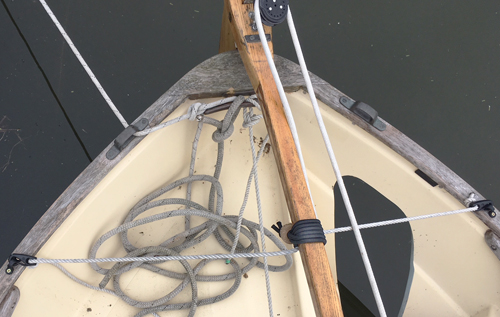
I just wanted to say thank you for such a useful and simple idea. Like Ole, I have a Drascombe Scaffie, which came with a DIY tiller tamer fitted by the previous owner. This worked well most of the time, but was prone to jamming at the most inopportune times. I have tried other ideas, notably the Huntingford Helm Impeder, which worked superbly most of the time, but was overly complicated and again prone to jamming. I have been using your idea for several weeks now and so far it has been excellent allowing me to confidently leave the tiller to tend to the trim etc. One other notable benefit is that I was able to fit it well aft on the tiller so it was less likely to snag the outboard or any of the running rigging.
Brilliant idea – thanks for sharing.
Dom,
Sorry for the late reply. I’m glad the system is working for you. I have been really happy with how well it works, how simple it is, and how easy it is to rig. I doubt I’ll ever have a boat without it now that I’ve used it for a couple of years.
Brilliant! I like it so much I think I might remove my regular factory-made tiller tamer and use yours instead, because it allows convenient “foot-tillering”, while not having to use either hand to disengage and then re-engage the taming mechanism.
This is great! I used to just tie the tiller to an horizontal line every time I need my hands free. The idea of the bungee is definitely worth a try. 🙂
Yes, it works really well as described. The one drawback I’ve discovered is that the friction does wear out the bungee loop eventually. Depending how often you sail, you might find yourself replacing it every year, or even several times a year. Still cheap, though.
Tacos at 60 knots? LOL, just happened to notice the plate mounted on the gunnel on the CY
That plate caught the eye of one of our other readers in a photo in my review of the Gas One Mini stove. Here’s the reply I posted:
I’ve been waiting for someone to notice that little sign mounted above the fire extinguisher. When my kids, Nate and Ali, were in middle school, I took them out for a summer dinner sail in ALISON, my Caledonia yawl. I thought tacos would be an easy meal to prepare for a picnic under sail, but I hadn’t anticipated what it would be like to eat them. We had a good breeze, and with full sail set, ALISON charged through the chop. Assembling the tacos—a fragile crunchy shell, shredded lettuce, grated cheese, pulled chicken, and diced tomatoes, topped with salsa—was difficult enough in a constantly moving boat. Eating a taco with all of those slippery moving parts was impossible to do neatly. We would have to hold the taco upright to keep everything from spilling out and turn our heads sideway to take a bite. Do that as the bow dropped into a trough, and most of dinner would wind up on our shirt fronts and on the floorboards. Ali, with a skilled deadpan delivery but a poor grasp of nautical terminology, said “Great idea, Dad. Tacos at 60 knots.”
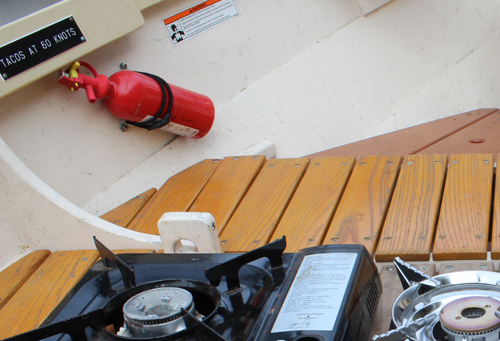
I thought it was only fair to warn others about the dangers of sailing aboard ALISON and had the plaque made.
Great story. Thanks for sharing and clearing up that inside joke.
Best regards and Happy Holidays!